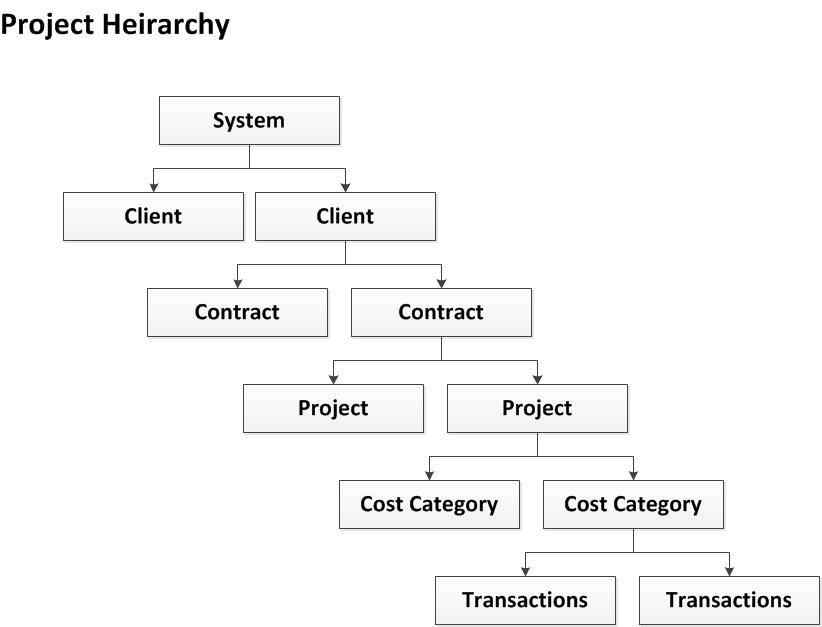How does Project Accounting Work?
Posted on: June 17, 2014 | By: Jim Bertler | Professional Services
In this 4th article on managing Professional Service organizations we will continue our discussion on Project Accounting or sometimes referred to as Project Management. Now that you are familiar with what Project Accounting is, we will discuss the basics behind how a Project Accounting application works. The following assumes that as part of your sales cycle you have finalized an agreement with a client to provide services.
This flow chart depicts the components of the Project Accounting system.

Step One:
Confirm that the client currently exists in the Accounts Receivable system. If not, the client and related master record information needs to be entered.
Step Two:
Create a Contract within the Project Accounting application and associate to a client. If the services you are to provide are under a Contract or Master Services Agreement that already exists in the system, select as appropriate. A client may have multiple contracts within the system. The contract will determine the default Project Type for all projects within that contract. Project types include:
Time and Materials
Fixed Price
Cost plus
Now is a good time to discuss each of these types.
Time and Materials:
A project type in which the billing to the client is based upon a rate per unit of measure. For time, this is often an hourly billing rate. Rates can be assigned to an individual or to a position within the company. Other expenses may have a billing rate or are pass-through costs to the client. As costs are incurred by the company for the project, a determination is made whether they are billable to the client. Either way, they are a cost to the project.
Fixed Price:
A project type in which the billing to the client is contractually pre-determined. This is often referred to as a milestone billing project type. The client will receive an invoice at a predetermined ‘milestone’ in the project. The level of effort to complete the project has no impact on the billing to the client. No determination is needed whether a costs is to be billed to the client. All charges to the project are costs. Effective management of resources working on these projects is important to ensure adequate margin to the firm.
Cost Plus:
A project type in which the client has agreed to a pre-determined markup (margin) to be added to the costs incurred to deliver the services. This is similar to a Time and Materials project, except the company is more transparent to the client regarding their costs and margin. This is a frequent project type used when performing services for a governmental agency. Cost rates utilized for the project are usually specifically defined in the contract and may or may not include overhead factors.
Each specific project accounting system may use different terminology, but the above illustration is an good example of the overall flow of a system.

